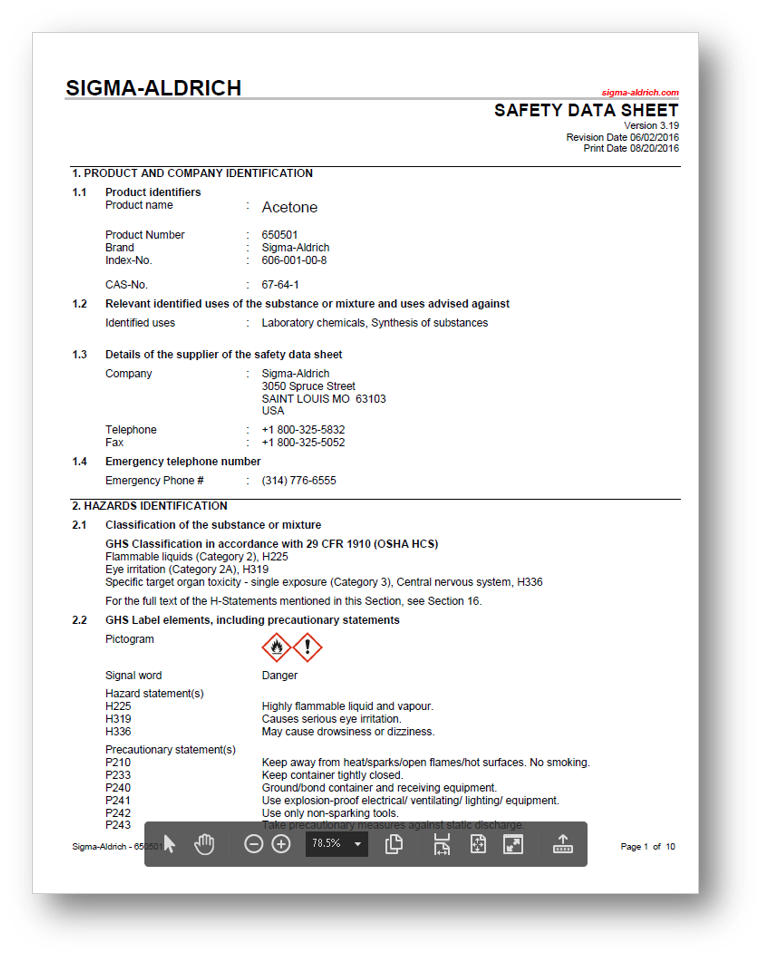 Safety Data Sheet Overview Safety Data Sheet Overview
The safety data sheet or SDS, is your primary source for information on chemical hazards and protective measures.
You can find the chemical SDS by searching a manufacturer’s website or calling the manufacturer. Safety data sheets must be up to date and readily accessible in your work area. Although electronic storage of SDSs is acceptable, it is recommended that paper copies be maintained for frequently used chemicals.
Each safety data sheet will contain 16 standardized sections. Each of the 16 sections are covered below.
Section 1: Identification
Section 1 includes the product identifier, the manufacturer or distributor name, address and phone number, an emergency phone number, recommended use and restrictions on use.
Section 2: Hazard Identification
Section 2 includes all hazards regarding the chemical and required label elements.
|
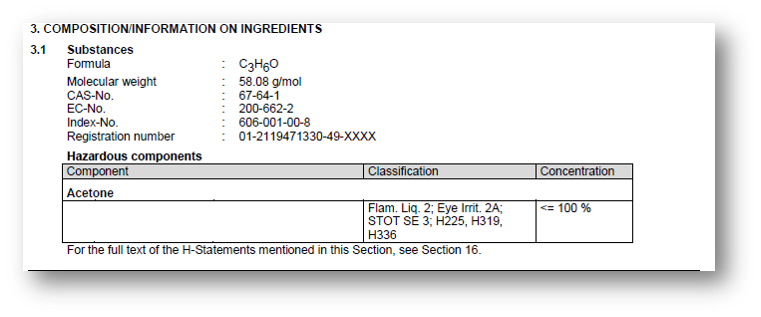 Section 3: Composition/information on ingredients Section 3: Composition/information on ingredients
Section 3 includes information on chemical ingredients and any trade secret claims.
|
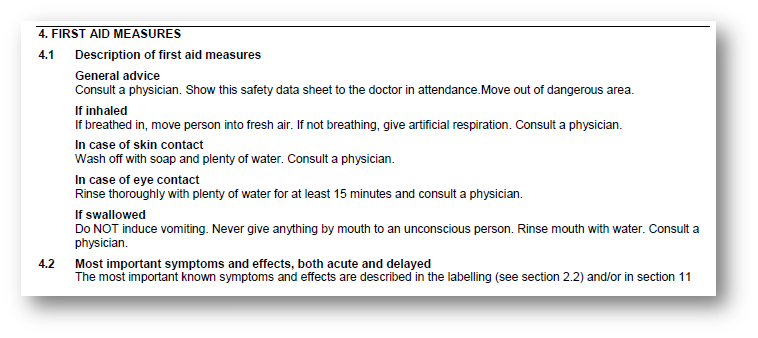
Section 4: First-aid measures
Section 4 includes important symptoms and effects both acute and delayed, and the required treatment.
|

Section 5: Firefighting measures
Section 5 lists suitable extinguishing techniques and equipment, as well as chemical hazards from fire.
|
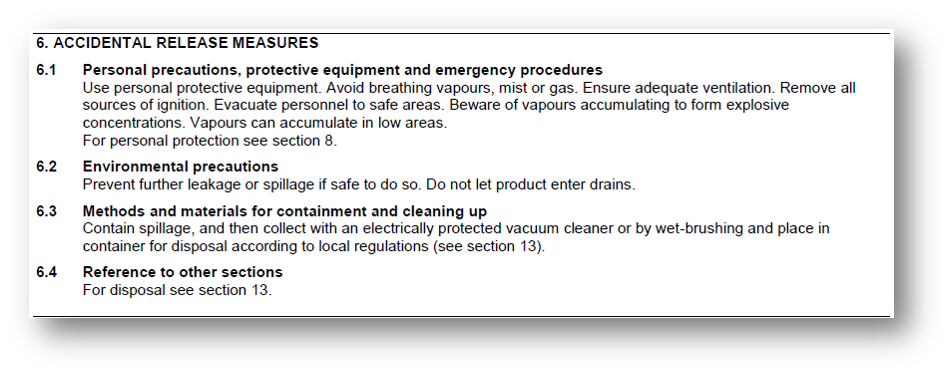
Section 6: Accidental release measures
Section 6 lists emergency procedures, protective equipment and proper methods of containment and cleanup.
|
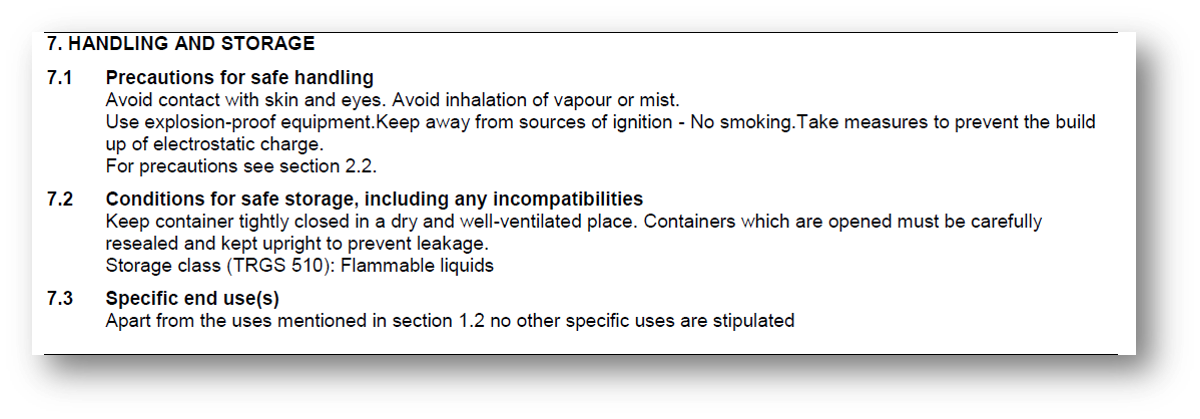 Section 7: Handling and storage Section 7: Handling and storage
Section 7 lists precautions for safe handling and storage, including incompatibilities.
|
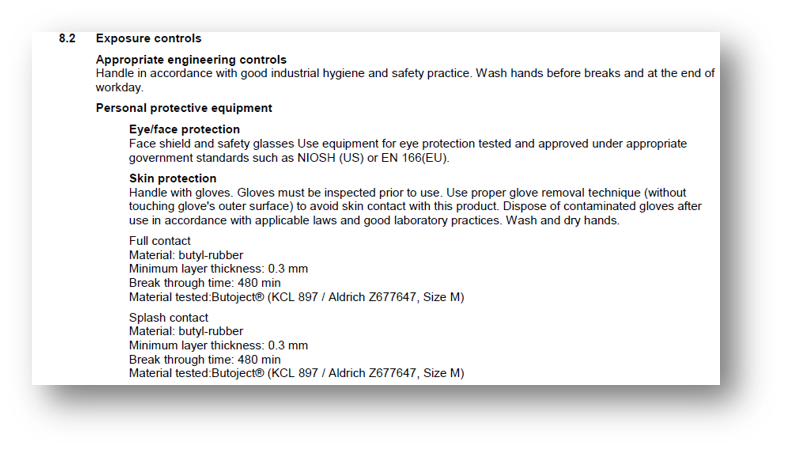
Section 8: Exposure controls/personal protection
Section 8 lists published exposure limits (i.e., PEL, TLV), appropriate engineering controls and personal protective equipment necessary to avoid exposure.
|
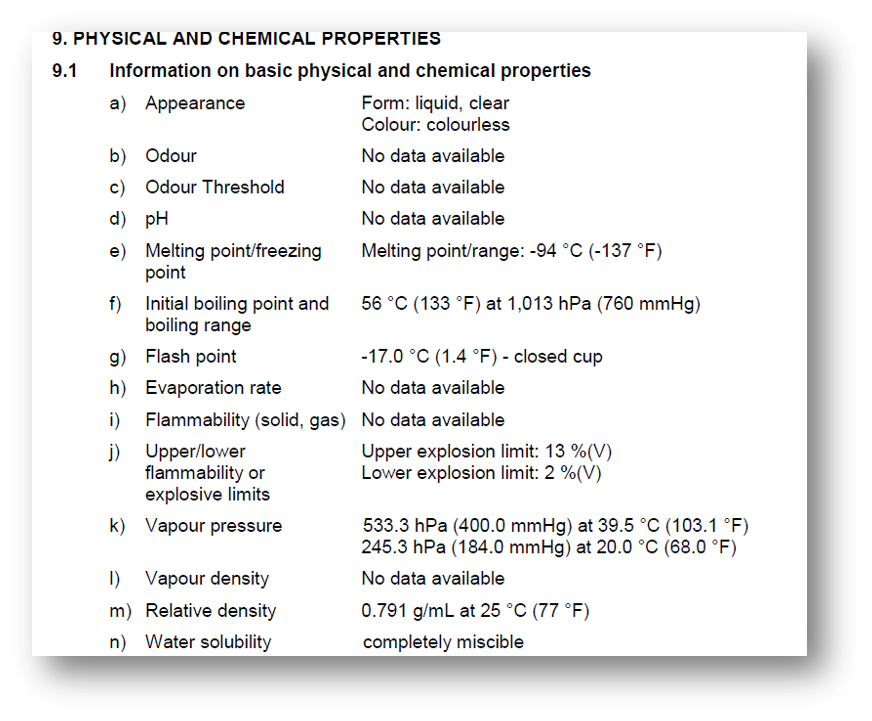 Section 9: Physical and chemical properties Section 9: Physical and chemical properties
Section 9 lists the information on basic physical and chemical properties such as appearance, pH, thermodynamics, density, solubility, and etc.
|
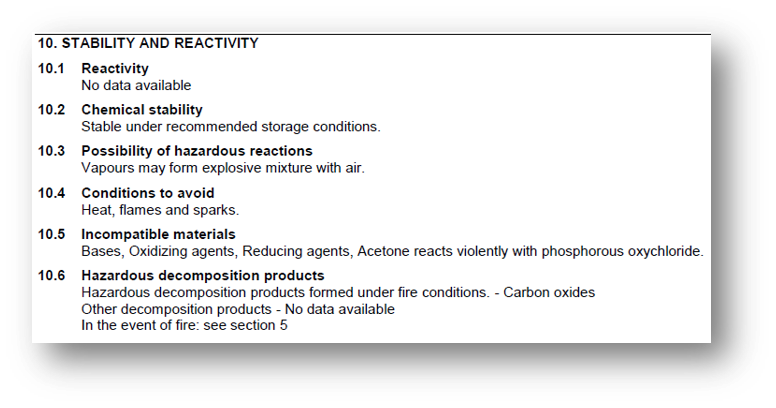
Section 10: Stability and reactivity
Section 10 lists chemical stability, possibility of hazardous reactions, conditions to avoid, incompatible materials, and hazardous decomposition products.
|
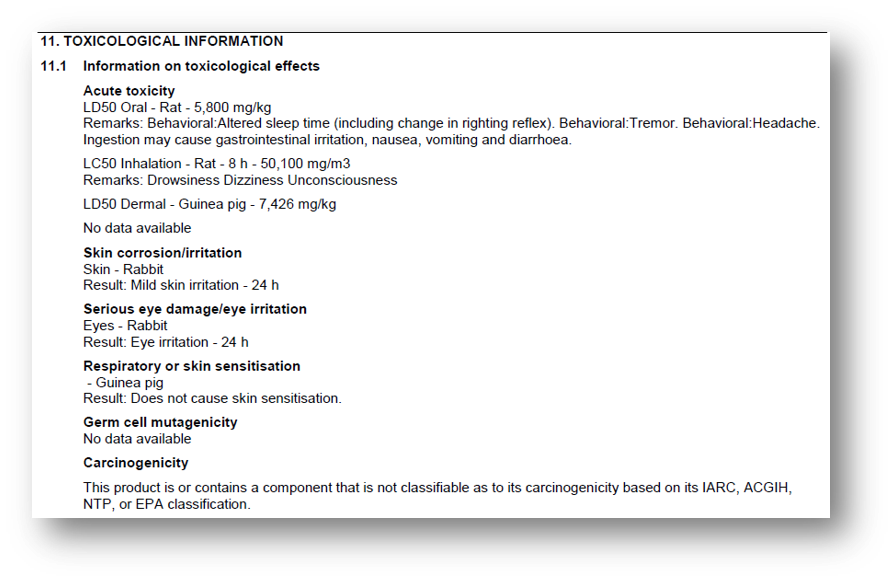 Section 11: Toxicological information Section 11: Toxicological information
Section 11 includes routes of exposure, related symptoms and effects and numerical measures of toxicity.
|
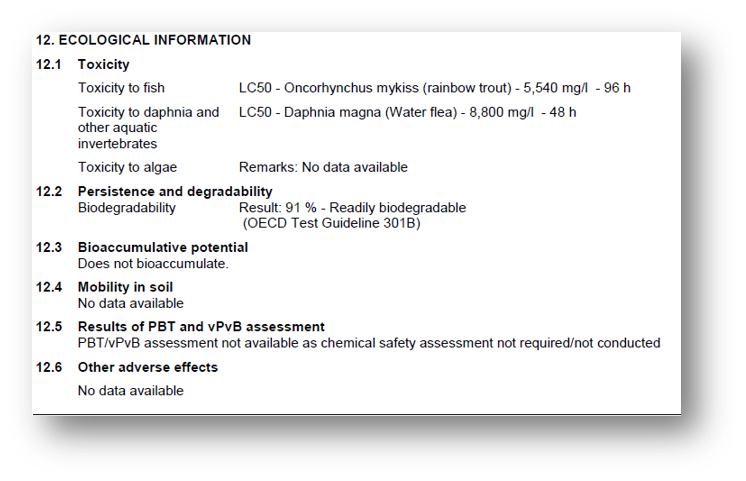 Section 12: Section 12:
Section 12, Ecological information, describes the ecotoxicity, persistence, degradability, mobility in soil, and other adverse effects of the chemical.
|
 Section 13: Disposal considerations Section 13: Disposal considerations
Section 13 provides a description of waste residues and information on their safe handling methods of disposal.
|
 Section 14: Transport information Section 14: Transport information
Section 14 lists special precautions which a user needs to be aware of or needs to comply with in connection with transport of the material.
|
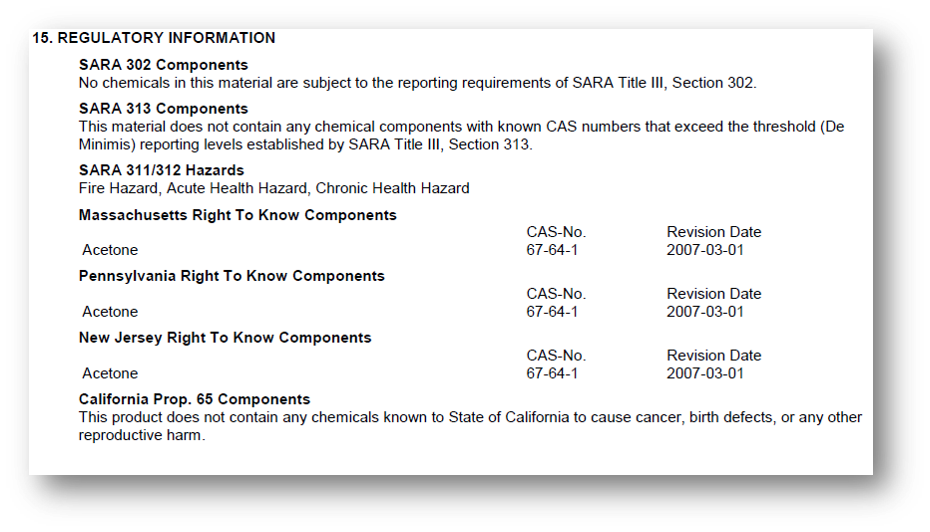 Section 15: Regulatory information Section 15: Regulatory information
Section 15 will reference safety, health and environmental regulations specific for the product in question.
|
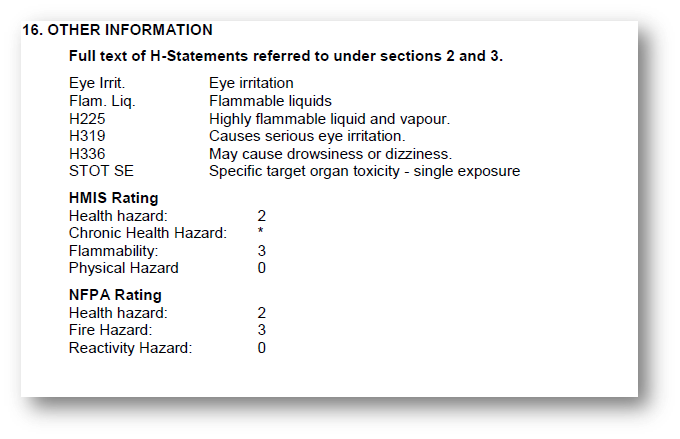
Section 16: Other information
Section 16 may include the date of preparation or the last revision of the Safety Data Sheet.
NEXT |
 Safety Data Sheet Overview
Safety Data Sheet Overview Section 3: Composition/information on ingredients
Section 3: Composition/information on ingredients


 Section 7: Handling and storage
Section 7: Handling and storage
 Section 9: Physical and chemical properties
Section 9: Physical and chemical properties
 Section 11: Toxicological information
Section 11: Toxicological information Section 12:
Section 12:  Section 13: Disposal considerations
Section 13: Disposal considerations Section 14: Transport information
Section 14: Transport information Section 15: Regulatory information
Section 15: Regulatory information

